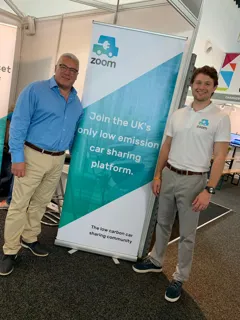A new software platform claims to “bridge the gap between fleets and insurers”, helping businesses to negotiate lower premiums and fully realise the return on investment in telematics systems.
Quest Automotive Fleet, launched this month by insurtech company Concirrus, is a data aggregator and analytics platform that creates the opportunity for behaviour and journey-based insurance pricing, rather than asset and postcode-driven premiums.
It is, claims Concirrus joint founder and managing director Craig Hollingworth, “a bridge across the chasm between fleets and insurers who are in different dimensions”.
Hollingworth, who set up the company with former Trimble CEO Andrew Yeoman, explained: “I have been disappointed in this market that fleet managers have invested huge sums in telematics, cameras, driver training and fatigue management because they want to reduce their insurance premiums.
“It’s snake oil – they aren’t getting a great deal because the insurance company can’t use the data on these devices.
“They can’t integrate data from hundreds of telematics systems, and they can’t underwrite based on historical data.”
The software has been in development for several years, with various elements undergoing live testing with insurance partner Haven Group. This has enabled Concirrus to establish compelling stats which have been cross-referenced with broker partner Marsh to prove the cost benefit for fleets.
The launch phase centres on two key components: Automated First Notification of Loss (FNOL) and Active Risk Management.
With instant alerts sent to both claims handler and fleet operator, Automated FNOL has been proven to save an insurance company or self-insured fleet £3,000 per claim as it enables the business to take immediate control of the incident, including any third parties. It is also reducing the loss ratio (the frequency with which losses are incurred) by an average of 5%. Both will result in lower premiums.
Meanwhile, active risk management is resulting in a 10% reduction in collisions. The platform takes data from telematics and camera systems via API feeds, regardless of the provider, for real-time updates and alerts. It enables a fleet to send intervention messages to the driver during breaks or at the end of the day to remind them about driving safely and not speeding.
The system also incorporates other environmental situations, such as locational risks and weather conditions, and fuses them with historical data, including risk by road type and Stats 19 incident data, to build an exposure ratio.
Quest is a subscription-based model on a per month, per vehicle basis. Pricing depends on the individual insurer/fleet, size of fleet and which modules they invest in.
“This is an independent platform that is accessible to insurers – that’s why we are different,” says Hollingworth. “It’s a statistical approach with data that is immensely valuable to the fleet and insurance company, saving money for both.
“The killer is when you take all that data and overlay it with the insurer’s own policy and claims data – that’s the magic machine.”
He believes insurers will look to develop new types of policy based on journey risk profiling, usage packages and pence per mile charging.
In addition, the level of control and insight offered by the system makes it easier for leasing companies to bundle insurance with the leasing rate.
“We can adjust the risk in real time and if a driver goes outside the parameters, then we can adjust the premiums. And why are policies annual?” Hollingworth asks. “They can be monthly or even daily, and done on an app. This could also be useful for car share companies.”
He believes there are further opportunities to be explored: “This is a fantasy view, but what about auctions? Fleet could share their (risk) data and insurance companies could bid for the contract – it puts procurement in the hands of the fleet manager.”
Where insurance savings can be made
Fleets will struggle to negotiate lower insurance premiums without taking robust action to manage risk or minimise the cost of claims.
The breakdown of premiums reveals where the opportunity is, according to Mike Russell, managing director – head of non-speciality claims UK & Ireland, at insurance broker Marsh.
Attritional losses (claims costs) account for 70%, expenses (operating costs) 20%, catastrophe losses (major losses) 5% and profit is 5%. “Do you want to barter with the 5% profit or the 70% attritional losses?” he asked.
“The process to reducing claims costs is prompt FNOL, fast claims processing and real-time data to reduce the risk of collisions.”
He believes the next few years will see instant FNOL technology replacing phone notification. This will enable instant FNOL handling and also immediate contact with the policyholder to check on their welfare at a vulnerable time.
“That will take it to the next level,” added Russell.























Login to comment
Comments
No comments have been made yet.